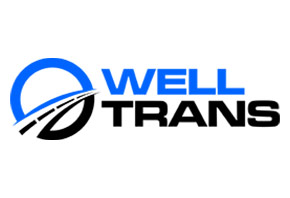Non Emergency Medical Transportation (NEMT) Software
Scheduling & Dispatch Software for Non Emergency Medical Transportation
Momentm’s NovusMED NEMT SOFTWARE HELPS HEALTH SERVICE PROVIDERS DELIVER QUALITY PATIENT CARE.
NovusMED is an ecosystem that includes call center, administrative, driver applications and client/clinic booking applications. NovusMED is the platform of choice for a wide range of medical transportation services and includes configurations for brokerage, providers, senior, community, and home health programs.
NEMT Software Features
Comprehensive Management
- Accurately manage calls and patient information
- Monitor real-time performance and adjust resource capacity to meet changes in service demand
- Manage Will Calls, confirmation calls, and recurring trips/standing orders in real-time
- Track on-time performance of drivers
- Improved mileage reimbursement and cost calculators to manage multiple contractors, funding sources (payors), multiple providers and volunteer driver programs
- Enhanced credential management for vehicles and drivers
- Manage subcontractor outsourcing with Provider Mobile, trip bidding and trip offering
- Bus pass management
- Include TNC/Lyft into contract management
- HIPAA compliant


Integrated Mapping
- Multiple choices for map data sources including Waze, Bing, Google and HERE
- Able to see the closest vehicle and perform immediate bookings
- Provide up-to-date, easy-to-use geographic locations and driver directions
- View routes and locations
- Vehicle history replay
- Integrated fixed route as an option upon initial trip booking
Flexible Billing and Reporting
- Advanced funding program capabilities
- Integrate with your accounts payable billing system
- Generate detailed manifests and reports on performance, utilization, and resource management
- Interfaces for Medicaid eligibility and claims management
- API and CSV file transfer capabilities
- DataMart cleans data and moves it to secondary database for increased performance when reporting


Additional Features
- Medicaid Eligibility Interface – electronically verify client eligibility and automatically store eligibility records, authorization numbers, and reasons for rejection
- Medicaid Claims Interface – electronically submit claims using flat or per-mile rates for single or multiple providers
- Service Request Interface – import service requests from a variety of funding sources
- Mobile Computing – integrate mobile computing devices and automatic vehicle location technologies to monitor and adjust services in real-time
- Advanced Communications Platform – offering multi-language IVR, email and text notifications
Benefits of Our NEMT Software
Better Service Vehicles
- Market-leading routing and scheduling provides your drivers with a schedule they can deliver
- With integrated driver applications, you get the benefit of real-time tracking, updated manifests and accurate compliance that results in a significant improvement in member experience
- Empowers call takers to view detailed patient information, including limitations and modifiers to make better decisions
- Increased autonomy for clients and their caregivers to manage bookings and changes via a notification platform
- Enable third parties such as hospitals and clinics with a secure booking portal to increase productivity and lower costs


Lower Costs
- More efficient vehicle utilization and driver deployment lowers overall operational costs
- Hosted solutions are available, removing the need for dedicated IT resources
- Published API and file exchange methods to ensure improved data accuracy and automation
Increased Productivity
- Fast, automated, and rule-based scheduling and dispatch
- Significantly improved driver routes and ontime performance
- Enhanced claims and billing capabilities speeds time to payment and lower claim rejection
- Ensure both vehicle and driver compliance and improved utilization to reduce and control costs


Easy-to-Use
- Customizable and best-in-class workflows simplify user experience
- Easy-to-follow menus, maps and help screens
- Clearly defined and simplified function-based processes
- Automated software installer makes first time and upgrade installs easy to deploy
Customer Feedback That Inspires Us
How We Helped Our Clients Succeed
Our case studies feature a unique customer story that highlights the challenges they faced, the solutions we provided, and the outcomes they achieved.
Our NEMT Software Features
Scheduling
Dispatch
Routing
Billing
Reporting
Client Notifications
Online Booking & Passenger Portal
Credential Management
Data Center Services
In-Vehicle Apps
Volunteer Management
NEMT Software Solutions: Your Top Questions, Our Responses
Non emergency medical transportation software is a digital platform that enables transportation providers, brokers, PACE Programs, MCOs and other health & human service providers to manage their business operations and streamline the process of transporting patients/members/clients to and from medical appointments.
Non emergency medical transportation software typically offers features such as scheduling and dispatching, electronic billing and invoicing, GPS tracking, real-time monitoring, ride management, and reporting and analytics.
Non emergency medical transportation software provides several benefits to transportation providers, including improved efficiency, cost savings, increased productivity, enhanced patient care, and compliance with regulatory requirements.
Non emergency medical transportation software can benefit a variety of organizations, including Managed Care Organizations, brokers, transportation providers, PACE, IDD and health groups
Non emergency medical transportation software improves patient care by providing reliable transportation services, reducing wait times, ensuring patient safety, and improving communication between patients, providers, and transportation personnel.
Yes, NovusMED non emergency medical transportation software is designed to be HIPAA compliant and ensures that patient information is secure and protected.
